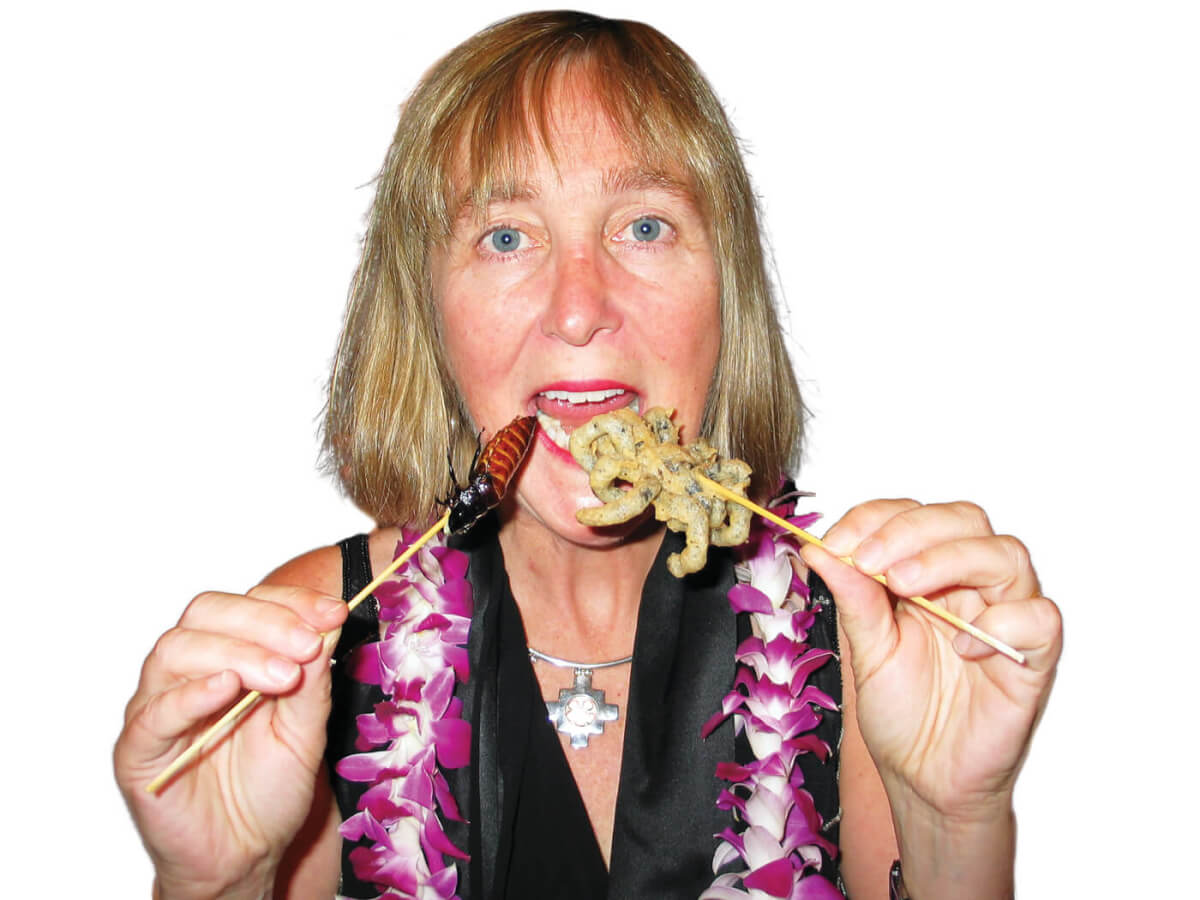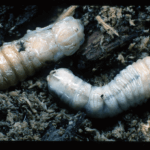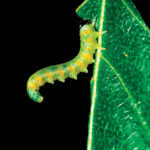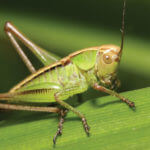Have you ever willingly eaten an insect? Chances are just the thought of eating bugs can give most people in the Western world a case of the creepy crawlies.
But as the global population continues to climb and our environmental resources continue to be stretched, incorporating insects into everyday cuisine is a very real possibility. Not to mention the fact that eating them could come in very handy if you find yourself desperately needing “food” for energy.
INSECTS AS HEALTHY FOOD
Entomophagy, or human consumption of insects, has been practiced since prehistoric times. In parts of Asia, Africa and Latin America as well as other parts of the globe, insects are regular supplements to the diets of more than two billion people, according to the Food and Agriculture Organization of the United Nations. Contrary to popular belief, this practice isn’t driven by hunger; rather, it’s due to the taste and dietary value of insects as a food source.
“Insects are high in protein and low in cholesterol,” says Meg Lowman, senior scientist with the North Carolina Museum of Natural Sciences.

“The added bonus in many developing countries is that they take very little energy to raise, unlike more commonly consumed livestock,” continues Lowman.
“The hardwood trees in Massachusetts have a different type of insect than the desert in Arizona or a swamp in Florida,” explains Zack Lemann, Curator of Animal Programs at The Audubon Butterfly Garden and Insectarium in New Orleans, LA. “Having a working knowledge of the indigenous bugs in the area where you’ll be traveling is a good idea.” Per Lemann, most insects aren’t active below 55 degrees (F), so foraging for bugs in cold climates isn’t a good survival tactic.
Global population growth and reduced environmental resources also factor into the popularity of insect-based cuisine. Per the Food and Agriculture Organization of the United Nation’s 2013 report, “Edible insects—Future prospects for food and feed security,” insects have a much higher feed conversion efficiency than livestock. Being cold-blooded, insects can convert more of what they consume into edible protein. For cattle, it takes approximately eight pounds of feed to produce a one-pound increase in weight. In insects, that ratio falls to two pounds of feed for one pound of weight.
We talked about the livestock issue with Lemann. “A vast amount of the grains cultivated in the developed world goes to feeding livestock,” he explained. “If we increased our insect output, we would free up a great deal of land and food resources that we currently dedicate to livestock.”
Throughout our lives, we’re taught to kill any insect we see, often using pesticides. These chemicals can also pose threats to live insects and make them harmful to ingest. Experts advise avoiding bugs in urban areas that might have been exposed to pesticides.
Insects can also help the environment by consuming bio-waste, which includes food and even human waste. Bugs consume significantly less water and are more drought-resistant than livestock and can even be used for animal feed. Insects are also far less likely to pass along diseases to humans, such as H1N1 (the bird flu) or BSE (mad cow disease).
“Insects are high in protein and low in cholesterol.” —Meg Lowman
ESCAR-NO
Even when considering the multiple benefits of entomophagy, the societal views of insects are difficult to overcome.
“Disliking insects is a learned behavior for many European cultures and their descendants,” says Lemann. “Eating insects isn’t vastly different from eating crustaceans. Look at the anatomy of crayfish, lobster and crabs—they are very similar to insects.” So much so that many experts advise those who are allergic to shellfish not practice entomophagy. This learned disdain for bugs is often reinforced by reality shows that dare contestants to eat writhing masses of raw insects, while most insects are cooked before eating. Most entomophagists consider the taste and nutritional benefits of an insect before eating it, much like any other food source, reminds Lemann. In fact, some insect species are considered delicacies, such a mopane caterpillars in southern Africa and weaver ant eggs in Southeast Asia.
In addition to environmentally and nutritionally sound dietary supplements, insects can also be a viable food option in survival situations.
While water should remain the top priority if you become lost or stranded, many people often think of gathering food. Hunting game or fishing might be beyond the skill level of some, but just about anyone can capture insects.
Be on the lookout for large, rather slow bugs that aggregate. Set traps baited with fruit or rotting meat, and have a sturdy net or basket on hand for catching and storage.
The types of edible insects available in the wild depend on the environment and time of year.
Regional climates also play a role in cultural views toward insects.
“Most areas throughout Europe and North America have more temperate climates that are ideal for growing livestock, but they prevent insects from being available year round,” Lemann states. “However, tropical climates near the equator aren’t good for livestock. These areas are better suited for more sustained insect activity in larger quantities, making them more viable dietary staples.”
Lemann advises, “You really want to consider the caloric return on investment. Expending more calories catching the prey than you’ll take in when eating it isn’t going to help in a survival situation.”
“Eating insects isn’t vastly different from eating crustaceans. Look at the anatomy of crayfish, lobster and crabs—they are very similar to insects.” —Zack Lemann
GET HOPPING
Experts estimate that cultural views on entomophagy will start to shift in the next 50 years or so as population growth and environmental change continue to stress resources dedicated to sustaining the current food chain.
“We are already struggling to meet global food demands,” says Daniella Martin, author of the “Girl Meets Bug” blog. “Within the next 50 years, the global community will need to diversify our diets to help feed everyone, and insects are natural part of that progression. Adding bugs to our diets should not be solely an emergency or survivalist consideration.”
Common insects include crickets and grasshoppers on grassy terrain, beetle larvae in dead and rotting wood, and caterpillars on plants. If you encounter an unfamiliar bug, Lemann suggests taking a small nibble to test the taste. If you don’t mind it, eat a small piece and wait an hour. “If you don’t get sick, you should be safe to eat more of the insect,” Lemann says.
Getting started is as simple as consulting resources such as cookbooks (The Eat a Bug Cookbook by David George Gordon comes highly recommended) and local museums. Lemann heads up a bug buffet demonstration at the Audubon Butterfly Garden Insectarium, where visitors can sample fare such as six-legged salsa and chocolate chirp cookies.
“New Orleans is well-known for its cuisine, and we strive to prepare and serve food that upholds that reputation,” he says. “Just because a dish contains insects doesn’t mean it can’t also be delicious.”
Avoid brightly colored bugs, especially those with red, yellow, orange or white in stripes or dots. These are well-known natural defenses for insects and often mean that the bugs either taste bad or are poisonous. Stingers and a bad odor are other indicators that a bug isn’t going to make a satisfying meal.
Prior to taking her position at the California Academy of Sciences, Lowman helped organize the North Carolina Museum of Natural Sciences’ annual BugFest, which enables attendees to sample professionally prepared insect cuisine and learn more about insects’ impact on our lives. “Insects are a vital part of our daily lives,” she explains. “They assist with pollination of our food sources and flowers, and many of them have medicinal properties.”
9 Billion
Estimated world human population by 2030
2 Billion
People worldwide who regularly consume insects
1,900
Number of edible insect species worldwide
8
Pounds of feed required to create one pound of livestock
2
Pounds of feed required to create one pound of insects
Source: Food and Agriculture Organization of the United Nations
Entomophagy can also start at home. Insect products such as mealworm flour or bars containing insects are an easy means of incorporating bugs into a daily diet and experimenting with entomophagy. For adventurous eaters, Martin suggests sourcing your insects from reliable farms that disclose the food source for their insects.
“Companies such as the San Diego Wax Worms Company and Fluker Farms are very transparent about their processes and have great products.”
Incorporating insects into everyday cuisine can serve as hands-on experience for survival situations. “Being comfortable cooking insects at home can help you overcome some of the panic that you might experience in the wild if you need to cook insects to survive,” says Lowman.
“While many cultures around the world eat raw insects, many of us in the Western world lack the biodiversity in our diets to handle uncooked bugs,” says Lemann.
He also advocates cooking any insect before consuming it.
CRUNCH TIME
Although you may not be ready to become a world-class insect eater, you should definitely consider trying some to get used to the idea of unusual food sources. When it comes down to it, it could mean the difference between life and death.
Editor’s Note: A version of this article first appeared in the Fall 2013 print issue of American Survival Guide.






